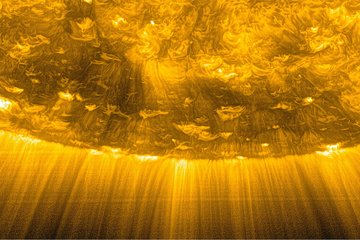All genres
1.
Journal Article
Gyrokinetic and kinetic particle-in-cell simulations of guide-field reconnection. I. Macroscopic effects of the electron flows. Physics of Plasmas 22 (8), 082110 (2015)
2.
Journal Article
Fundamental and harmonic plasma emission in different plasma environments (Research Note). Astronomy and Astrophysics 564, A15 (2014)
3.
Journal Article
PICPANTHER: A simple, concise implementation of the relativistic moment implicit particle-in-cell method. Computer Physics Communications 188, pp. 198 - 207 (2014)
4.
Journal Article
Instabilities of collisionless current sheets revisited: The role of anisotropic heating. Physics of Plasmas 21 (11), 112106 (2014)
5.
Book Chapter
Kinetic Simulations of Electron Acceleration at Mercury. In: Magnetic Fields in the Solar System: Planets, Moons and Solar Wind Interactions, pp. 201 - 240 (Eds. Lühr, H.; Wicht, J.; Gilder, S. A.; Holschneider, M.). Springer, Cham (2018)
6.
Talk
Particle Acceleration at Mercury. 5th PlanetMag Meeting, Nördlingen, Germany (2015)
7.
Talk
Electron Physics in Shock Waves. European Geosciences Union General Assembly, Vienna, Austria (2014)
8.
Talk
Week collisionless shock simulations. 4th PlanetMag Meeting, Potsdam, Germany (2014)
9.
Talk
Simulation of weak collionless shockfronts in the solar wind. DPG Spring Meeting, Berlin, Germany (2014)
10.
Talk
PIC-code simulation of spontaneous instabilities of current sheets: anisotropic heating and guide field influence on magnetic reconnection. 40th COSPAR Scientific Assembly, Moscow, Russia (2014)










